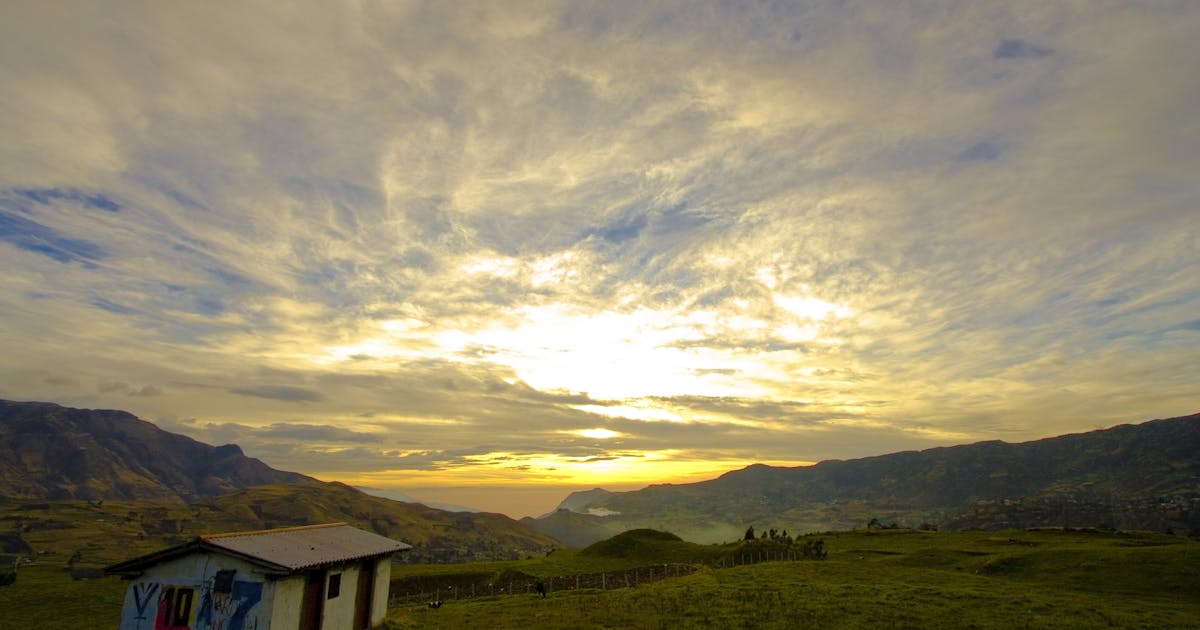Ecuador is no stranger to wildfires.
As climate change raises the risks of seasonal wildfires in the South American country, a new twist on old technology is helping local authorities stop the fires before they start.
An innovative tool is being developed by researchers at Conservation International that combines local weather forecasts with existing systems that use satellites to track forest fires. The result is a “fire weather forecast” that will communicate
the risk of a fire sparking to farmers and community members.
We spoke with Karyn Tabor, director of early warning systems for Conservation International’s Moore Center for Science and a leader in the development of this technology, to understand precisely how this emerging tech could transform Ecuador’s
fire-alert system — and help its wildlife and people.
Q: First, what is the wildlife situation in Ecuador?
system involves citizens calling a mobile number when they see a fire and while this is effective, it’s largely reactive and does not prevent the actual fires from starting. This is an enormous problem because these fires spread quickly, engulfing
páramos ecosystems — grasslands in the Andean mountains that are critical for biodiversity and water regulation — that sustain the lives of millions of people.
Once a fire starts in the páramos, it can burn as much as 10 hectares (more than 24 acres) per hour, and many of these fires rapidly burn their way into towns, destroying buildings and homes and endangering people’s lives.
Q: So, this tool will help stop fires from starting in the first place?
A: Yes, to a certain degree. The update of Firecast is what we call a “fire-weather forest” because it uses local weather forecasting information in combination with near real-time satellite data and local land use information to
generate a model that shows the likelihood of a fire burning out of control within the next eight days. That “fire weather forecast,” will be relayed to farmers and communities so that they know when they shouldn’t burn land
or when they need to be extra careful. By letting local community members know the risk of a fire starting, they will stop burning on days that are high risk and the number of wildfires will decrease.
Q: How does it work exactly?
A: Local weather data will update the fire prediction — the likelihood a fire can burn uncontrolled within a given area — hourly based on conditions such as precipitation, temperature, wind direction and windspeed. We are partnering with
the U.S. Forest Service to develop this predictive fire-danger model and a communication strategy similar to Smokey the Bear.
Q: For readers who aren’t familiar, who is Smokey the Bear?
A: During World War II, many of the United States’ firefighters were overseas, so the U.S. Forestry department came up with a new strategy to prevent wildfires: involve communities by telling them the risk of fire on any given day. They accomplished
this by creating a character called “Smokey the Bear” and placing signs outside of national parks that warned people of the risk of fire that day.
Similar fire-danger warnings will be posted on signs in Ecuadorian communities closest to fire-prone areas. Farmers and community members will be able to learn about the likelihood of a fire from these signs and will know when to be extra vigilant
in watching for and reporting fires. We plan to work with the local weather service to include the fire-danger conditions on weather apps for mobile devices as well.
Q: So it’s essential for all of Ecuador?
A: Yes, but specifically for the páramos grasslands and Amazon rainforest (part of which lies within Ecuador). The Amazon rainforest is one of the most biodiverse regions of the planet, and its trees are essential in storing carbon and stopping climate change. Because wildfires release greenhouse gas emissions into the atmosphere, investing in the new deployment
of Firecast will actually help Ecuador decrease their emissions. This decrease can help the country meet its nationally determined contributions, or target greenhouse gas emission reductions, under the Paris Agreement to help fight climate change.
Q: So this tool could help stop climate change? How?
A: Yes, because greenhouse gas emissions cause climate change, and by reducing the number of fires, we can help reduce those emissions.
Seventy-five percent of global tropical fire emissions come from Indonesia and the Amazon region, so our goal is to expand this tech to other Amazonian countries and Indonesia. It’s really essential we that we not only provide accurate
forecasting information, but we also connect the technology with the land managers who could most benefit from the solutions.
Karyn Tabor is director of early warning systems for Conservation International’s Moore Center for Science. Olivia DeSmit is a staff writer for Conservation International.

